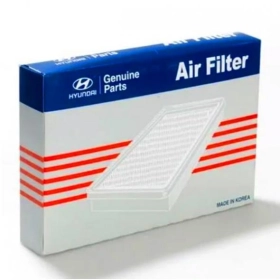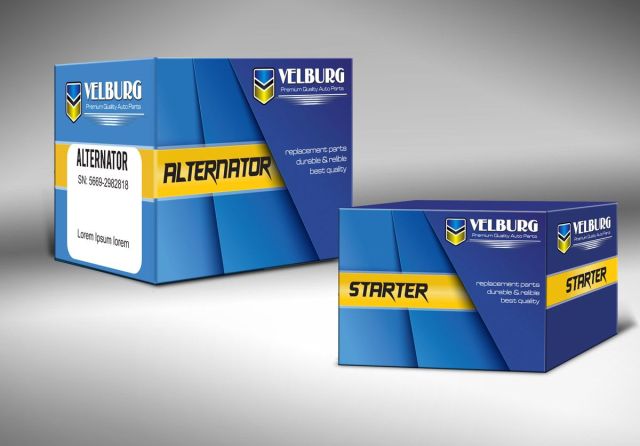The automotive industry thrives on reliability, durability, and innovation. Behind every high-performing car or motorcycle is not just the engineering of its parts, but also the way those parts are stored, shipped, and delivered. This is where auto parts packaging comes in. Proper packaging ensures that everything from small spark plugs to heavy brake pads arrives in perfect condition, ready to be installed without damage or defects.
In today’s competitive marketplace, businesses must look beyond simply boxing products. They need packaging that offers protection, brand visibility, and efficiency in logistics. In this guide, we’ll explore why packaging matters, what makes it effective, and how businesses can take advantage of the best solutions in the industry.
Why Auto Parts Packaging Matters
Unlike general retail products, auto parts vary in shape, weight, and fragility. A windshield is fragile, while a gearbox is heavy and awkward to move. Without proper packaging, parts can crack, rust, or lose functionality during shipping and storage. When damage occurs, businesses face higher costs, product returns, and dissatisfied customers.
Packaging is not only about protection—it also communicates brand values. A well-designed box signals professionalism and reliability. For retailers, mechanics, and end consumers, this can make a big difference in brand perception.
Key Features of Effective Auto Parts Packaging
To understand how to create packaging that performs well, let’s break down the essentials:
1. Strength and Durability
Auto parts require sturdy materials. Corrugated cardboard, reinforced fiberboard, and high-grade plastics are commonly used. Heavy-duty materials prevent dents, scratches, or breakage during transportation.
2. Customized Fit
Because auto parts come in all shapes and sizes, generic boxes don’t work. Inserts, foam padding, and molded trays ensure a snug fit. This reduces movement inside the box, minimizing damage risks.
3. Moisture and Dust Protection
Rust is one of the greatest threats to metal parts. Packaging that includes moisture barriers or protective coatings keeps parts safe from environmental factors.
4. Clear Labeling
Efficient logistics depend on accurate labeling. Barcodes, QR codes, and printed instructions help in identifying, tracking, and handling parts correctly.
5. Sustainability
With industries moving toward eco-friendly practices, many manufacturers are turning to recyclable materials. Green packaging solutions not only reduce waste but also improve brand image among eco-conscious customers.
Auto Parts Packaging and Branding
Beyond functionality, packaging plays a powerful role in marketing. Businesses can use packaging as a branding tool, turning every shipped item into a promotional opportunity.
- Logo Printing: Adding logos helps build recognition and trust.
- Custom Colors: Colors that match a brand’s identity reinforce consistency.
- Instructional Design: Packaging can include diagrams or installation tips, adding value for the customer.
Well-branded packaging stands out in crowded warehouses, dealerships, or retail stores. It communicates reliability, making customers more likely to return for repeat purchases.
Trends in Auto Parts Packaging
The packaging industry is evolving with technology and consumer expectations. Here are some of the latest trends:
1. Smart Packaging
QR codes and NFC tags are being integrated into packaging to offer real-time tracking, authenticity checks, and digital manuals for customers.
2. Lightweight Materials
Manufacturers are increasingly using lightweight yet durable materials to reduce shipping costs without compromising protection.
3. Eco-Friendly Options
Biodegradable materials and recycled cardboard are gaining popularity. Companies that adopt these materials show commitment to sustainability, appealing to environmentally aware customers.

4. Enhanced Printing Technologies
High-quality printing enables detailed product information and eye-catching designs. For example, Air Filer packaging Boxes gives brands the ability to merge product protection with professional presentation.
Wholesale Packaging Solutions
Businesses dealing with large inventories need cost-effective options. Buying in bulk allows for better pricing and consistent supply. For example, Auto parts packaging box wholesale providers supply durable packaging at affordable rates, ensuring businesses can keep up with demand without sacrificing quality.
Wholesale solutions are particularly useful for distributors and suppliers who handle thousands of parts each month. By streamlining packaging orders, companies save time and money.
The Role of Design in Packaging
Packaging is not just a protective layer—it’s a design challenge. Every detail, from box size to graphics, contributes to customer satisfaction. A good auto parts packaging design should focus on:
- Practicality: Easy-to-open designs help technicians and mechanics save time.
- Space Efficiency: Compact packaging reduces shipping costs and storage requirements.
- User Experience: A neat, organized box makes unpacking smoother for customers.
Designers often collaborate with manufacturers to create tailored solutions that combine protection and brand appeal.
Customization for Competitive Advantage
When businesses want packaging that reflects their unique identity, they opt for custom auto parts packaging. This allows companies to choose materials, shapes, colors, and branding that align with their image. Custom packaging also ensures that every part, whether small or oversized, has a box that fits perfectly.
Custom solutions are ideal for businesses that want to stand out in the market. A well-branded, sturdy box not only protects the product but also enhances credibility.
Logistics and Efficiency
One of the biggest challenges in the auto industry is supply chain management. Efficient packaging reduces logistical headaches. Here’s how:
- Stackable Designs: Boxes that stack well optimize warehouse space.
- Standardized Sizes: Consistency in packaging dimensions helps in palletization and bulk shipping.
- Protective Inserts: Foam or cardboard dividers prevent collisions during transit.
Effective packaging helps streamline processes, reducing the chances of delays and product losses.
Retail and End-User Packaging
While wholesale packaging focuses on efficiency, retail packaging must prioritize appearance. Shoppers often judge quality based on presentation.
- Small Components: Items like bolts and fuses are often packaged in small blister packs or pouches.
- Medium-Sized Parts: Items such as filters or bearings come in branded boxes with detailed labeling.
- Large Parts: Items like bumpers or exhaust systems are secured in reinforced crates or corrugated boxes.
Good retail packaging ensures that customers have a positive first impression and receive parts in flawless condition.
Sustainable Packaging: The Future of Auto Parts
The automotive sector is under pressure to adopt greener practices. The packaging of auto parts is no exception. Companies are experimenting with recyclable cardboard, biodegradable plastics, and reusable crates.
By adopting eco-friendly packaging, brands not only reduce their environmental footprint but also appeal to modern consumers who value sustainability.
Steps to Improve Auto Parts Packaging
Businesses looking to upgrade their packaging can follow these steps:
- Analyze Product Needs: Identify which parts require extra cushioning or moisture resistance.
- Consult Packaging Experts: Work with professionals to design durable and cost-effective solutions.
- Test for Durability: Run drop tests, vibration tests, and environmental tests to ensure reliability.
- Optimize for Branding: Add logos, product details, and clear instructions.
- Switch to Green Materials: Explore recyclable or biodegradable options where possible.
By following these steps, businesses can create packaging that satisfies both operational and branding requirements.
Conclusion
Auto parts packaging plays a vital role in ensuring that products reach customers safely, efficiently, and attractively. From wholesale solutions to custom designs, businesses have endless opportunities to enhance their packaging strategy. With trends leaning toward sustainability, smart technologies, and advanced printing, companies that invest in high-quality packaging gain a competitive edge.
Whether it’s protecting fragile components, promoting brand identity, or optimizing logistics, packaging is no longer just a box—it’s a powerful tool for success in the automotive industry.


